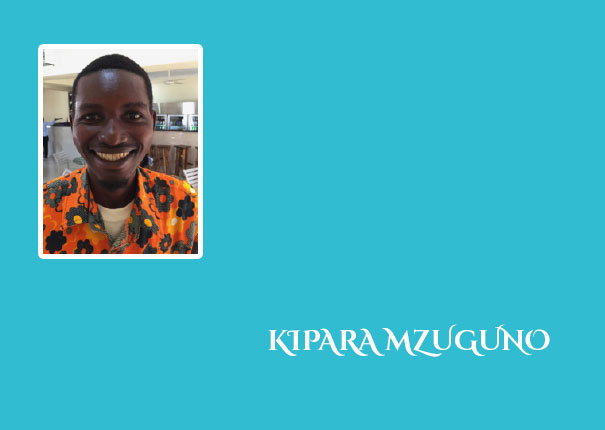Tanzanian artists have participated in decorating the Beach Rooms. Their work speaks for itself. Here are a few keynotes to their biographies.
Mwatuka Mussa
The painter was born on 24th September 1984 in Dar es Salaam and grew up in an artist’s family. She has the colours of Africa in her blood and loves to depict everyday situations in her pictures. She has an endless number of ideas. The material she uses for the realisation of her pictures is unfortunately very difficult to obtain, if at all. Mwatuka Mussa wants do more than just create art. She demands that all women in her country should record their experiences artistically.
Farida Husseini
Born in Tunduro in the rural south of Tanzania, Farida Husseini moved after her primary schooling to the 3-million metropolis Dar es Salaam to live with her sister. There she took various casual jobs and then in 2000 decided she definitely wanted to paint. She has four children and lives in the north of Dar es Saalam in the Kinondoni district. Her preference is painting sculptured wood objects.
Hendrick Lilanga
The grandson of the famous artist George Lilanga was born on 20th October 1974 in Dar es Salaam. He studied with his grandfather. As is usual for African art students, he copied his teaching master. In doing so, Hendrick at the same time developed his own entirely individual style. His “Ghosts”, his Shetani statues are dressed in modern clothes. This you cannot see on the Shetani statuettes of his grandfather.
Rashidi Mzuguno
He is a star in the African art world and was born on 9th June 1987 in one of the oldest cities in Tanzania, in Bagamoyo. He often helped his grandfather, the painter David Mzuguno on larger assignments. His grandfather wanted his grandson to stay at school for longer. This he rejected with the words: «if I stay at school, I cannot paint». Although there has been a strong influence through the close collaboration with his grandfather, Rashidi Mzunguno’s style is quite individual. He combines two painting techniques and thereby demonstrates a precision, which is almost incredible for such a young artist.
Iddi Issa
He comes from a family of artists and grew up with colours. His artistic development shows his transition from traditional Tinga Ting art into a free style. The newer a work is, this independence becomes clearer. Iddi Issa lives with his family in Kinondoni a little outside the Tanzanian capital Dar es Salaam.

Kipara Mzuguno
Kipara was born 1991 in Dar es Salaam as the son of the famous David Mzuguno. He started to use his father’s equipment as soon as he could walk. He helped his father to paint and was encouraged to create his own little pieces of art. This way he inherited the unique and elaborate painting technique developed by the Mzuguno family from his childhood onwards. Since the death of his father in 2010 he has continued the Mzuguno style. Being emotionally bound to the tradition of his forefathers, it is challenging to change the way of painting. Nevertheless, Kipara has mangaed to develop his own style. His innovative pieces are created in the father’s tradition, sometimes almost similar to his style. Superficially one might see them as copies of his father’s work, but the deep expression and emotional messages are unique and show the artistic talent of Kipara Mzuguno. Kipara had exhibitions in Tanzania, Uganda, Ruanda und Kenya.

Lute Lutangano
Lute was born 1976 in Dar es Salaam. Lute is a master of carving. Once you enter his workshop you are fascinated by the wonderfully and meticulously carved wooden plates and sculptures of all sizes. He focused almost entirely on this carving technique until 2010. He has also been painting in acrylic on canvass or cotton wool since 2011. In his pictures, he shows surprising and astonishing perspectives on both modern and traditional life in the African village and modern city life. His exhibitions have been shown in Tanzania, India, USA, Kenya, Uganda, Italy, Norway, Canada and Switzerland.

Mwanakhamis Mohd Ali
No need to ask if henna painting is art. It definitely is much more than handicraft. You can see this in the way Mwanakhamis combines symbols and patterns across times and cultures in creating her unique style. Mwanakhamis was born 1971 in Zanzibar. She learned painting and especially Henna painting in Mwana, Zanzibar. She teaches at the Mwanakerekwe Art School in Zanzibar. Her pictures have been shown in Germany, USA, China, and in Japan.

